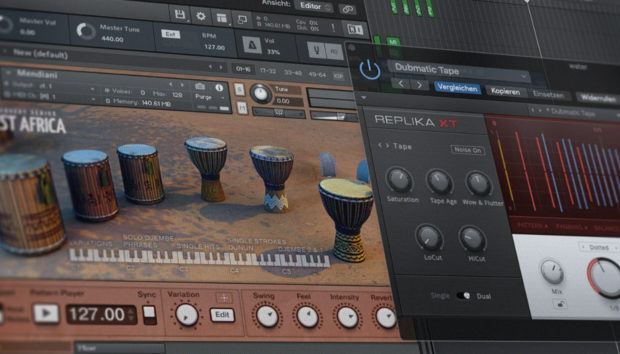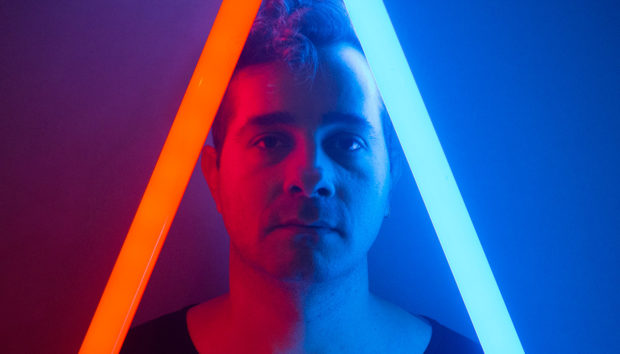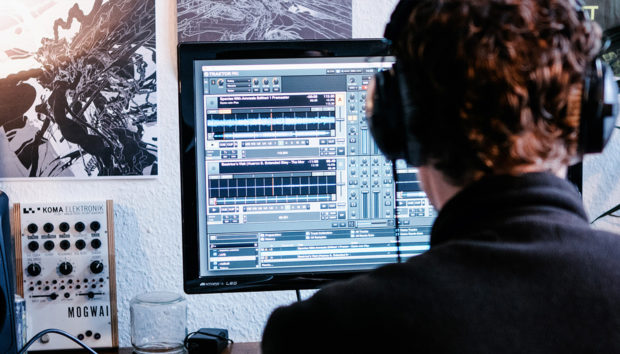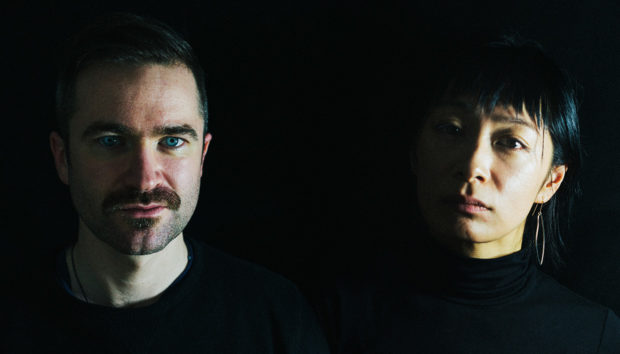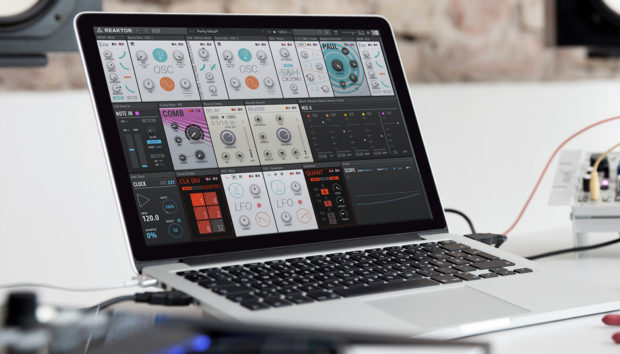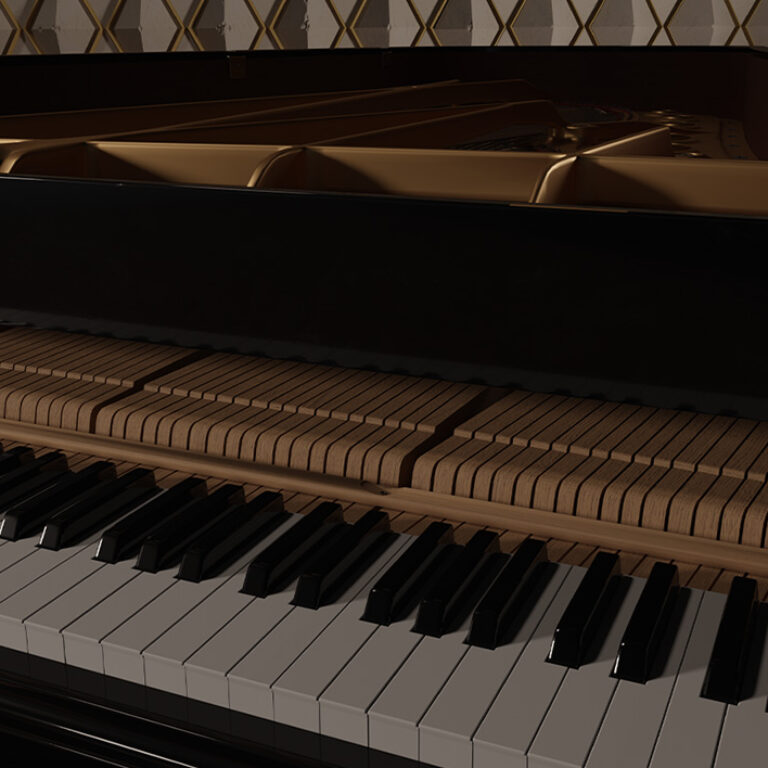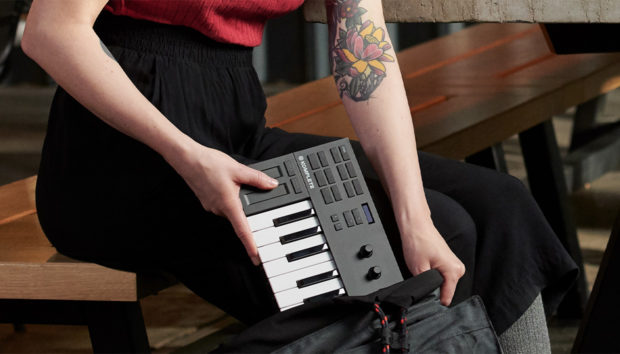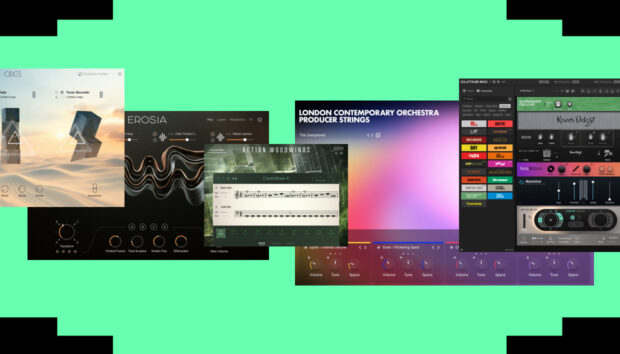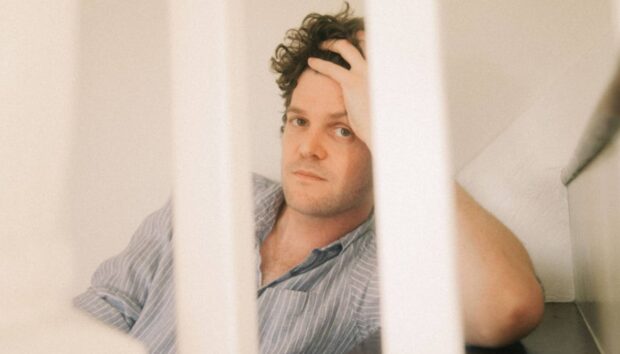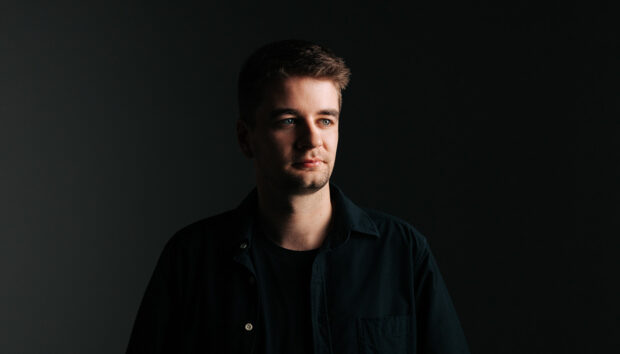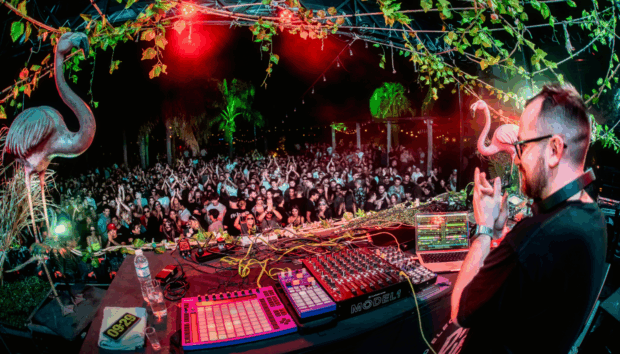It’s one of the magic tricks of music production: turning a simple sound into a whole world you can get lost in. In the right producer’s hands, a piano can be much more than just a piano: it could be an ethereal tone engine, a shimmering synth pad, or even a whole rhythmic ensemble. That producer could be you. All you need is the right tools and some clever techniques.
In this article, we’ll show you how to use Noire to create rich, immersive soundscapes out of just a few notes. This innovative piano plugin, which captures Nils Frahm’s concert grand, is designed to give you a range of tools for crafting immersive sound. Whether you’re composing a cinematic piano score, writing ambient music, or looking for new sound design approaches, this article should give you plenty of inspiration.
Jump to these sections:
- What is Noire?
- What is the difference between pure and felt Noire?
- How do I create a sense of space and depth?
- 5 ways to use Noire for immersive soundscapes
- Start using Noire to create soundscapes
Follow along with this tutorial using Noire – included in both Komplete and the 360 subscription.
What is Noire?
Noire is a piano plugin that captures the sound of Nils Frahm’s concert grand piano. Recorded using vintage mics and preamps in Berlin’s renowned Funkhaus complex, this is a unique, evocative instrument that helps give Frahm’s music its depth and emotion.
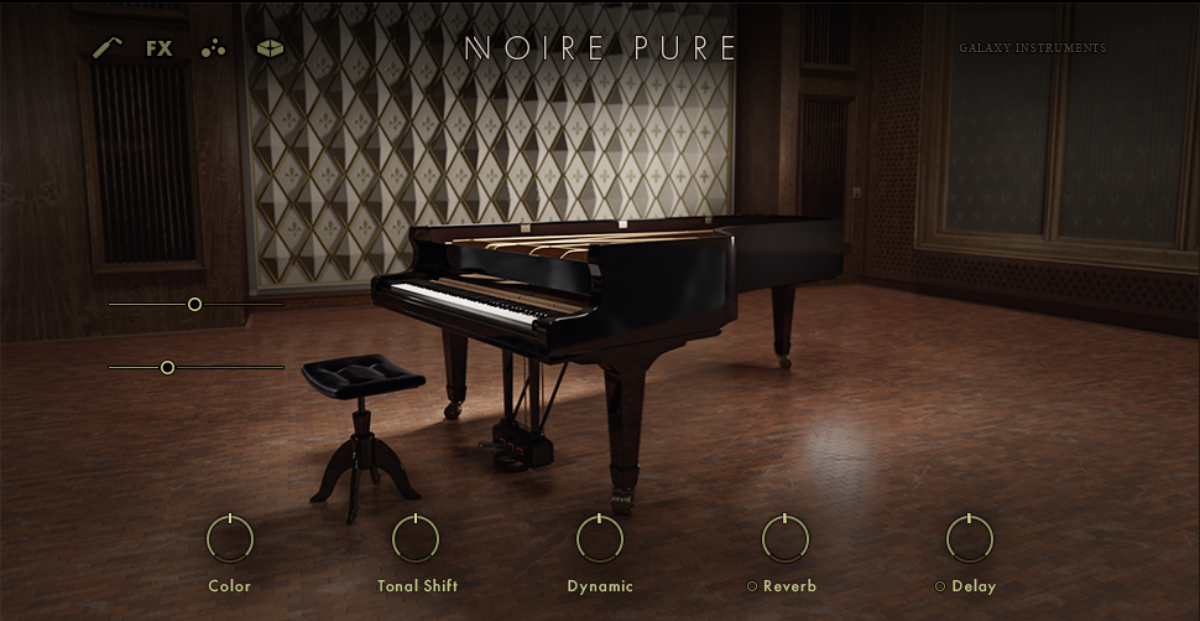
While it’s based on a faithfully sampled piano, Noire isn’t about imitating a certain sound. With a range of tweakable parameters, built-in effects, and thoughtful extras, Noire gives you everything you need to shape sounds your way. In the tutorial below, we’ll explore five routes to creating rich, immersive soundscapes with Noire.
What is the difference between pure and felt Noire?
Noire gives you two instruments in one: the pure version delivers a clear grand piano tone, while the felt version features the same piano, but with soft felt placed between the hammers and strings to create a gentler tone. The two versions of Noire are based on completely distinct sample libraries, and each has its own feel and character. As we’ll see, both can be great for making immersive soundscapes.
How do I create a sense of space and depth?
To create space and depth in your music, try enriching the timbre of your sounds by adjusting their parameters, layering sounds together for a more complex texture, or adding effects such as reverb and delay. Feelings of ‘space’ and ‘depth’ in music can be slippery and hard to define, but they tend to arise when a production is more complex, textured, and lifelike. There are many ways to achieve this through sound design – we’ll explore five of them below, using Noire.
5 ways to use Noire for immersive soundscapes
1. Use the particles engine for evolving textures
At its core, Noire is an incredibly lifelike piano plugin. But it’s more than that too: many of Noire’s features are designed to transform your piano playing into complex, immersive soundscapes. One of the most inspiring of these sound design features is the Particles engine.

This innovative tool listens to your playing and adds a cloud of pulsating notes that complement your performance. These notes are carefully positioned to add motion and life without getting in the way. Using the Particles engine, you can create a dancing kaleidoscope of sound by playing just a handful of notes or chords – perfect for making cinematic piano textures.
To start using this tool, open the Particles tab in Noire and turn on the engine. Then pick a Mode from the drop-down menu – this will dictate the overall behaviour of your particles, from subtle embellishments to dense clouds of sound.
The engine offers plenty of parameters for getting your particles just right. You can tweak their timbre, Density and rhythmic variation, and even add a blurry delay effect.
In our example, we chose the intense Random Chaos Mode to showcase the Particles engine at its fullest. It transforms a simple chord progression into a rich, detailed soundscape.
2. Layer pure and felt tones for depth
One way of adding depth to your music is by layering similar instruments together to create more nuanced textures. Noire is ideal for this, since it’s actually two distinct – but related – piano instruments. The pure version has a clean grand piano tone, while the felt version sounds softer and more rounded. By adding two instances of Kontakt to your project, you can play the same part with both pianos – and add depth to a melody or chord progression.
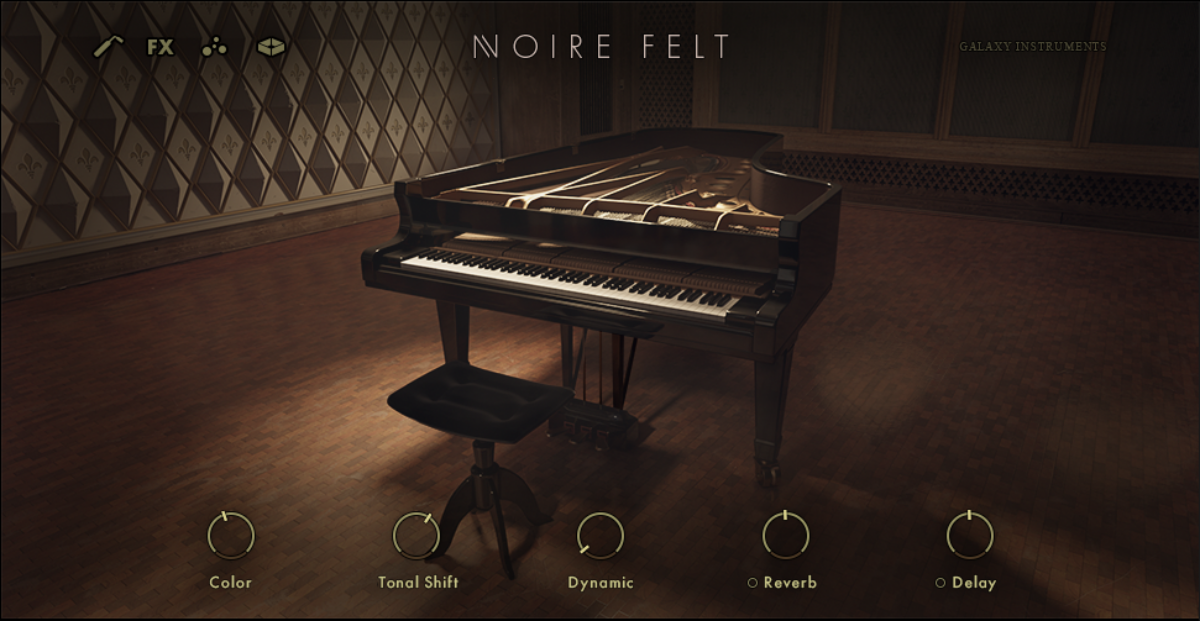
Noire’s extensive sound-shaping tools are available in both versions of the instrument. You can use the main controls (always visible at the bottom of the interface) to adjust Color and Tonal Shift, which is handy when making softer soundscapes.
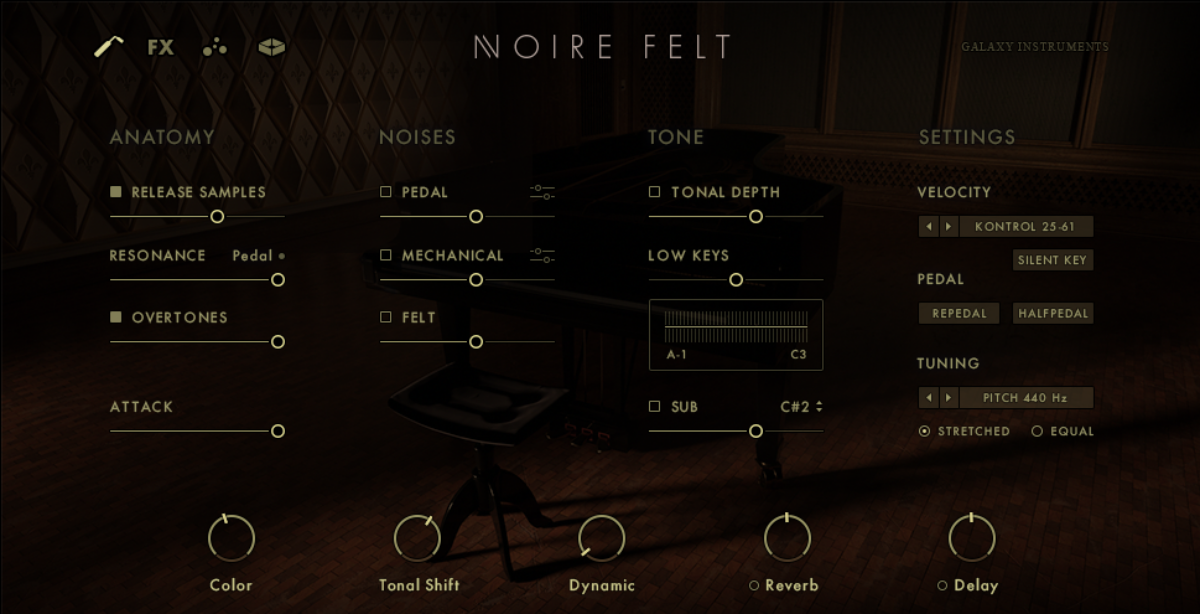
On the Piano Edit page, you’ll find some unusual controls that excel at making immersive textures. Try boosting Resonance to get shimmering tones when the sustain pedal is held. You can also add glistening Overtones, and turn your piano into a slow-onset synth pad with the Attack control.
In this example, you can hear Noire Felt panned a little to the left and the brighter Pure to the right. Both instruments have been tweaked to create rich, soundscape-ready textures.
3. Use long reverb and delay tails to create space
In electronic production, “space” is an illusion. The sounds are coming from inside your computer, but you want them to ring out as if they’re being heard in a concert hall or a deep canyon. Reverb is the magic that makes this illusion possible – and delay, its cousin, plays a big part too. Whenever you want to create a sense of space in your music, try using a combination of these effects.
Noire features powerful reverb and delay engines. They make it easy to place your piano sounds in a lifelike space such as a church or rehearsal room. They also offer epic, out-there algorithms that will help you create immersive soundscapes out of a few piano notes.
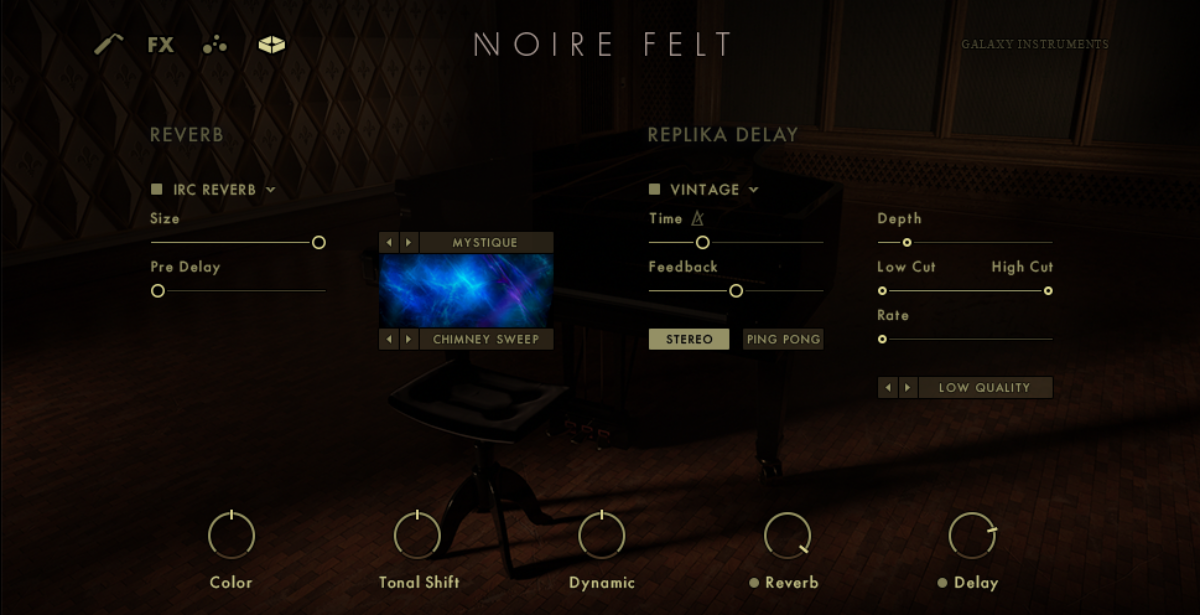
To start adding reverb and delay, turn each effect on using the buttons at the bottom right of the interface, and turn up the wet mix until you can hear the effect.
Noire offers a choice of convolution or algorithmic reverb engines. The convolution engine has a dizzying array of reverb sounds, from vintage classics to lifelike rooms. The Mystique category is the most useful for ambient music and cinematic genres. Dive in there to find exotic, shimmering reverbs that will turn your piano playing into a spooky expanse of sound.
Noire’s delay section, based on the beloved Replika, offers plenty of options too. Each of the delay modes has its own flavor, from the crisp Modern mode to Vintage, Analogue, and Tape – plus a blurry Diffusion mode if you want to double up on your reverbs. To turn delay into a powerful sound-design tool, make sure the delay Time is fairly long and the Feedback is turned up. Engage the Depth control to add subtle modulation.
In this example, we spaced out our sound with the “Chimney Sweep” convolution reverb setting, plus the Vintage delay mode with modulation dialed in.
4. Use Noire’s built-in FX to conjure dreamlike atmospheres
Noire’s FX page gives you plenty more ways to shape your dreamy soundscape. Small tweaks can combine to make a big difference.
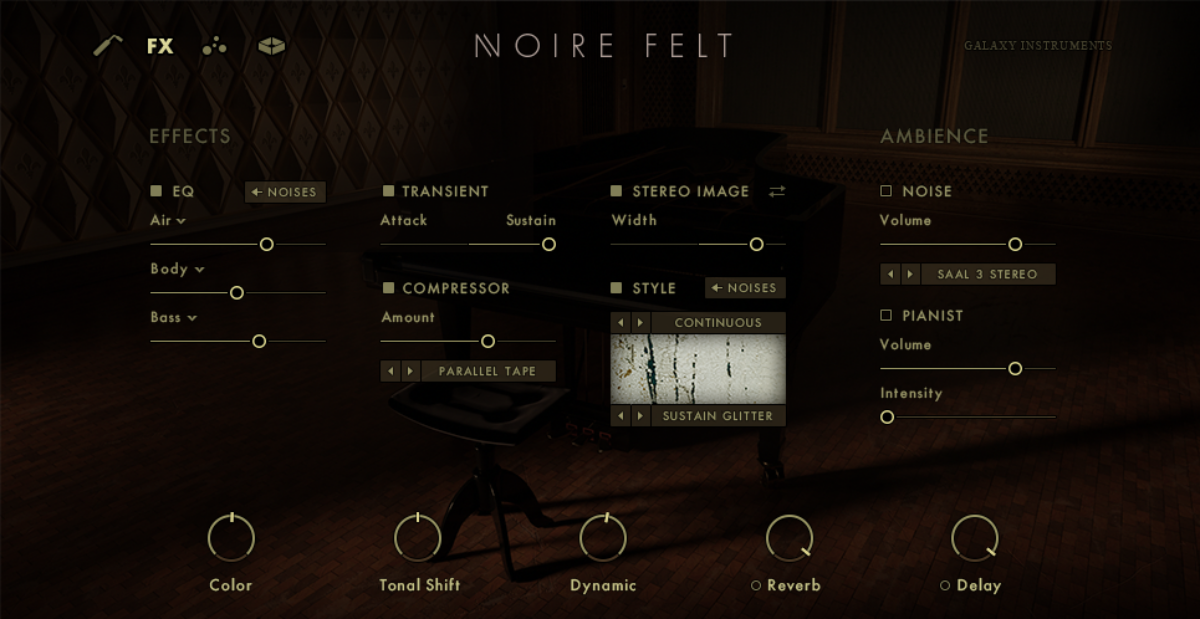
You can use the EQ to add high frequency “air” (for shimmering brightness) or low frequency depth. The Compressor and Transient controls are handy for bringing out the sustain of each note you play, making the piano sound more rich and immersive. The Stereo Width control, meanwhile, can add panoramic space.
To unlock another layer of soundscaping power, engage the Style effects. These effects add an extra layer of movement, texture, or processing to the piano, turning Noire into an inspiring sound design tool.
The “Moving” category offers shifting, shimmering textures – from gentle tremolos to more extreme fluttering effects. “Continuous” features more extreme sound design settings that can turn your piano playing into glistening reverb-like textures, glittering chimes, and more.
In this example, the first piano you hear features our initial FX tweaks, while the second piano has the “Sustain Glitter” Style effect added.
5. Use extra FX to send sounds into outer space
Creating immersive soundscapes often involves adding more processing to your sounds. As we’ve seen, Noire has plenty of built-in effects that are perfect for this.
But if you want to go further, try adding external effects to your signal chain. A few well-chosen VSTs, combined with the authentic piano tone of Noire, can unlock whole new levels of depth and expansiveness.
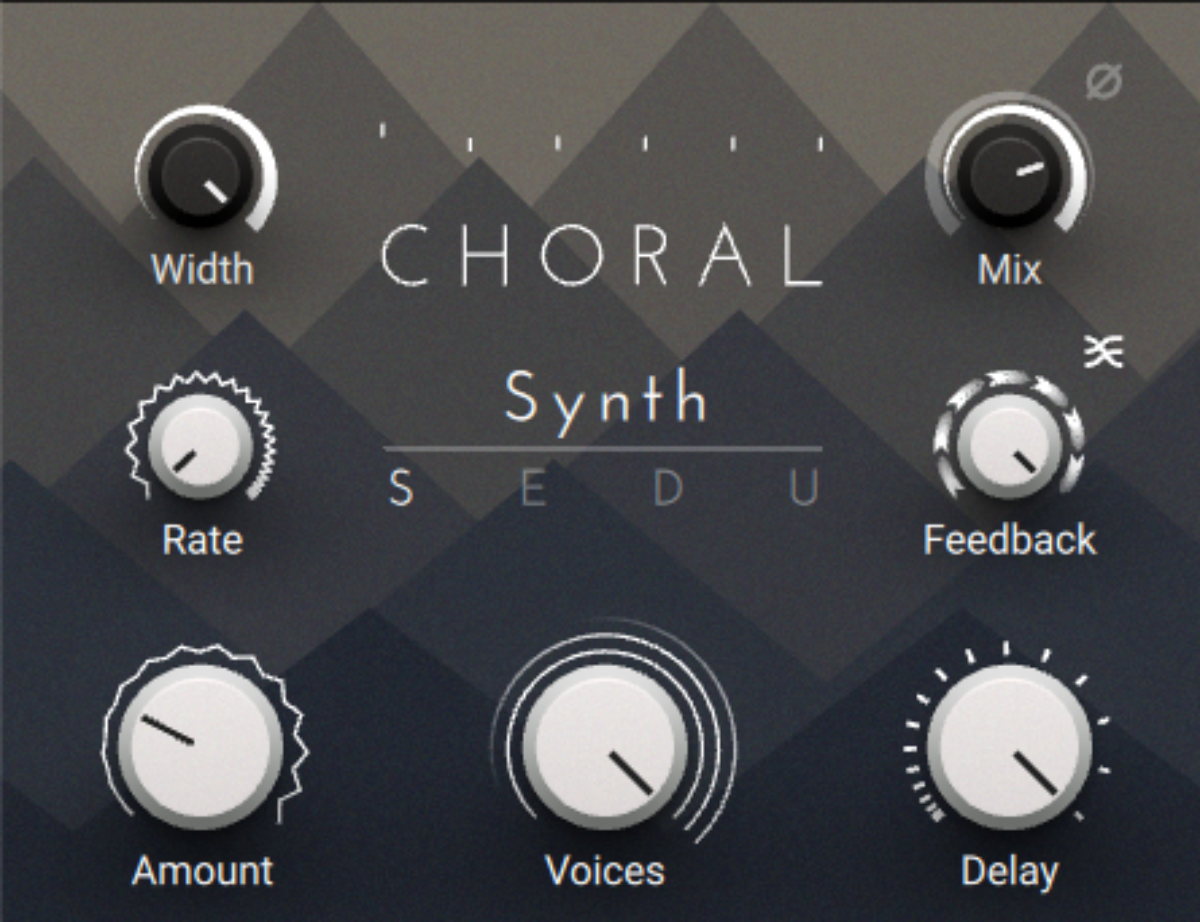
Effects that might enrich your soundscape include: modulation FX such as chorus and phase; mixing FX like EQ and compression; and perhaps even more delay and reverb.
In the example below, we started with a basic Noire pure patch, then added VST effects from the Native Instruments 360 Plus subscription – which features a ton of good quality effects that are great for soundscaping.

First we added some extreme chorus with Choral, using its Scatter setting to make it behave almost like a reverb. We then added even more reverb using Raum – the Cosmic mode is perfect for sending sounds into outer space. The result is a rich, otherworldly soundscape.
Start using Noire to create soundscapes
In this article, we’ve looked at five ways to create immersive soundscapes using Noire, an expressive piano plugin with plenty of tricks up its sleeve. Now you’re familiar with the instrument, it’s time to start using it in your own compositions. Whether you’re exploring sound design, creating ambient music, or writing a cinematic piano score, Noire has the range and sonic depth you need.
